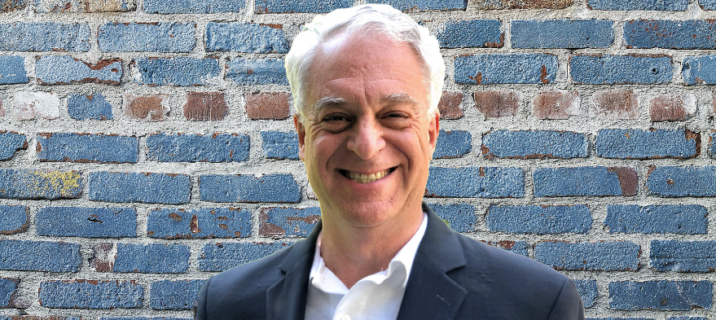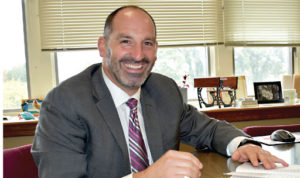Last March schools across the country closed and typical live instruction morphed into erratic meetings on Zoom. Many of us assumed this was a short-term shut-down but, as March turned into April and into May, parents, students, teachers, and education leaders started to wrap their heads around two appalling notions:
- First, this was no quick hiatus but a long-term problem.
- Second, student learning was cratering and what had been termed “online learning” was actually emergency remote instruction led by teachers who were unfamiliar with how to use technology effectively.
In response, a group of education leaders, many from the education reform world, launched a non-profit called the National Summer School Initiative (NSSI). Edsurge describes the effort as “a crash course in effective online teaching—and figuring out what good online teaching looked like—and a summer enrichment program for students across the country.”
But the story doesn’t end there.
One of the leaders of NSSI, renamed Cadence Learning, is Chris Cerf, former superintendent of Newark, New Jersey’s largest school district, and the state’s former Education Commissioner. I spoke to him recently about how and why this new non-profit evolved and, as the pandemic continues, what he sees as the next steps to ameliorating learning loss for America’s students.
How did you get involved with Cadence Learning?
This past spring I was in touch with three other public school leaders who all had records of success. We wanted to do something substantial, to make a real difference, and we wanted whatever we came up with to be philanthropically-funded. We were able to raise $5 million while we honed down our objectives.
What were those objectives?
We needed to identify this significant issue of learning loss. There was a mad scramble in the spring to transition to an immediate form of remote instruction with incredibly little attention paid to quality and effectiveness. The results were very uneven: non-synchronous solutions, swivel cameras and pat yourself on the back. The received wisdom was that this was disengaging for students and hard on teachers. So we started to ask ourselves, what needs to change? The answer was fairly simple: The key to effective learning is very high-quality instruction, something that can be easily missed in a mad scramble. And you need to be able to scale up that high-quality instruction to reach as many students as possible.
What did you do next?
We contracted with a third-party recruitment agency that hired 20 of the best teachers in America in both ELA [English language arts] and math for third through eighth graders. These included Teachers of the Year, those who were able to create incredible learning gains, in both traditional and charter schools. We then ran a one-week training institute for over 500 educators, teaching them to be effective remote instructors.
They had to become masters of Zoom, Google, learn the craft and pedagogy of this environment. We worked very closely on our core curricula, which was extremely child-centered, focused on guided learning where the student is at the center of the intellectual exercise. For example, in a math problem there may be multiple ways to arrive at a solution. When the students show their work, they learn from each other in a very layered way.
These teachers then worked in a free five-week summer program for 12,000 students across 17 states, with the 20 mentors continuing to help them reach students effectively.
What does this actually look like?
Imagine that Johnny comes to class and with him—remotely, of course—are 25 other fifth graders. The newly-trained teacher goes through the morning meeting and then Wayne Banks [one of the mentor teachers] is on the screen for all fifth graders in the program and delivers a math lesson. In addition to Wayne, they also see on the screen a diverse group of 3-5 students who raise questions that other students might ask. Wayne then hands off the lesson to his partner-teacher,who is responsible for those 25 students and focuses on continuing the discussion and monitoring their work. We also use break-out rooms for small group and individual instruction. Then at the end of the class Wayne comes back and reiterates the main points of the lesson.
Do you just do math and ELA?
No, we layer in enrichment activities in science, yoga and movement classes with the National Dance Institute.
After that one-week summer training, the teachers are on their own?
Not at all. Every single day the teachers have professional development with their mentor teachers and go over lessons for the following day. Some teachers actually re-watch the whole video—they see the mentors as brilliant educators. I watch them myself. We’ve all become very comfortable with this. The teachers overwhelmingly say, “this is the best professional development I can imagine.” There’s nothing like seeing a great teacher teach.
How did parents feel about the program?
We discovered, after a data-driven review, a shockingly high approval rate from parents, students and schools. We got very high reviews.
And this was originally planned just for this past summer, right?
Yes, but around August everyone was still scrambling. We looked across the country and realized the rhythm of how school districts were handling this was very inconsistent. There was a gradual realization, especially after the second surge of COVID in the summer, that we won’t be coming back in September with normal in-school instruction but that, to some extent, teaching and learning would continue to have some element of remote instruction. Schools should have just picked a lane and done that well. Many didn’t. When fall arrived, they were still pondering a number of options and none were fully-baked. So we decided to offer our program across the country to districts and networks and make it customizable so it could be used in either a hybrid or fully-remote schedule.
Do schools have to pay a lot for this?
No, we really wanted to make this extremely affordable, available to all regardless of the economics. We gave it away for free during the summer, including the licenses for online sites [Dreambox Learning, Lexia, and Edmentum] and books. It’s still free in the fall. Assuming there is a demand for it in the spring, we’ll have a modest fee and ask our partners to step up. Cadence is highly-subsidized and dramatically less expensive than other platforms.
Part of the ethos here is we want to be of service in this time of crisis. We will never turn down a client for economic reasons. We are here to make a difference for the thousands of children across the country who face significant learning loss from the absence of brick-and-mortar schools. Cadence is here to change that outcome.
(This interview was first published on Education Post.)



